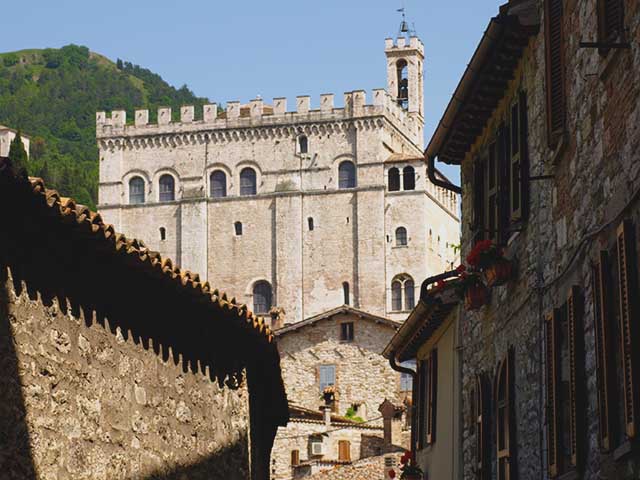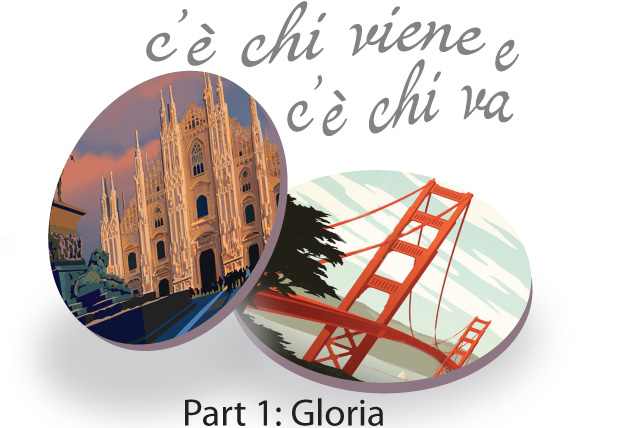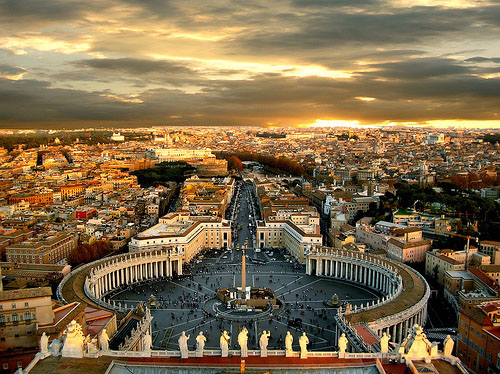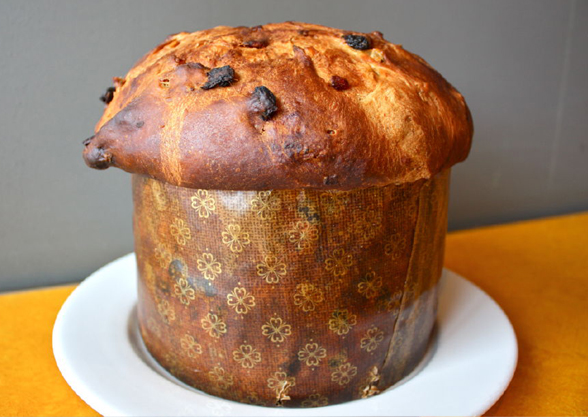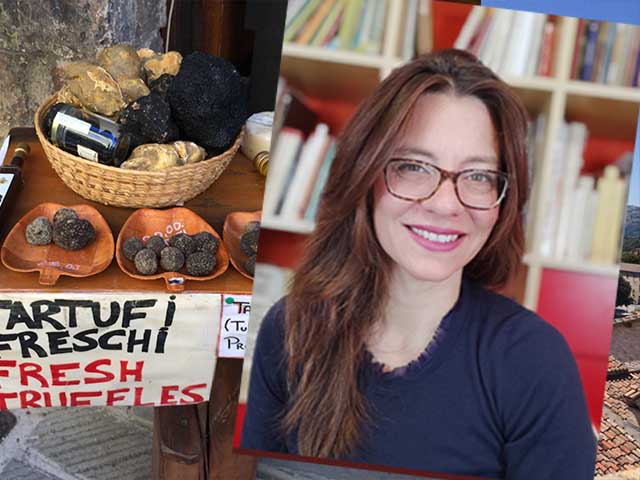
Un Giorno da Matti a Gubbio! La Corsa dei Ceri
One Crazy Day in Gubbio! The Race of the Candles — Guest Post by Irene
Un cuore verde che pulsa storia
Umbria: The Green Heart of Italy
L’Umbria è conosciuta come il “cuore verde d’Italia” perché si trova al centro del paese ed è l’unica regione completamente senza sbocchi sul mare. È una terra di dolci colline, verdi vallate e paesi storici ricchi di cultura, con civiltà che risalgono all’età del Bronzo e del Ferro. Ho visitato spesso l’Umbria, esplorando Perugia (la patria dei Baci Perugina), Spoleto e Assisi.
Umbria is known as the “green heart of Italy” because it’s located in central Italy and is the only landlocked region. It’s a land of rolling hills, lush valleys, and historic towns brimming with culture, home to civilizations dating back to the Bronze and Iron Ages. I’ve visited Umbria many times, exploring Perugia (home of Baci Perugina), Spoleto, and Assisi.
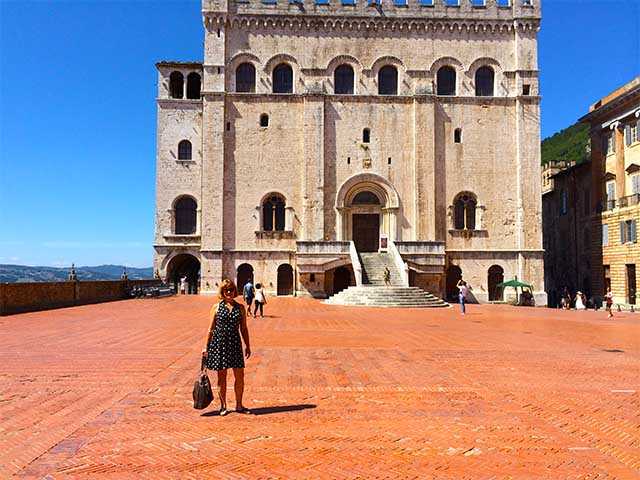
A Montefalco, ho gustato il delizioso vino Sagrantino e provato la pasta al tartufo umbro. Ho anche trascorso del tempo a Gubbio . Ma non avevo mai sentito parlare della “Corsa dei Ceri” fino a questo post di Irene, la mia nuova complice linguistica di Best Italian Classes!
In Montefalco, I savored luscious Sagrantino wine and pasta made with Umbrian truffles. I also spent time in Gubbio . But I had never heard of the “Race of the Candles” until this guest post by Irene, my new linguistic accomplice from Best Italian Classes!
Guest Post by Irene – La Corsa dei Ceri / Race of the Candles
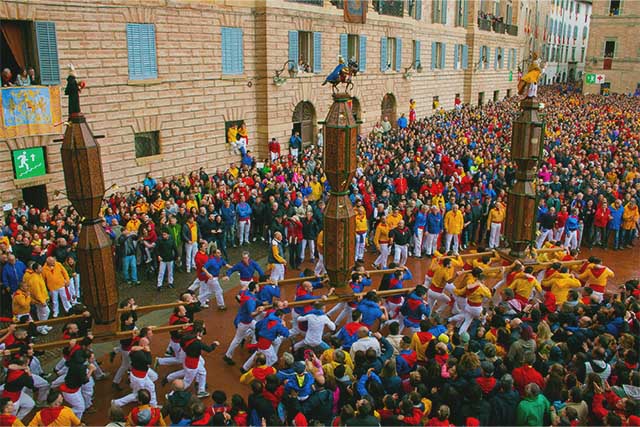
Chi sono i “matti” di Gubbio?
Who Are the “Crazy Ones” of Gubbio?
Non so se Melissa l’abbia mai saputo, ma per noi umbri, gli abitanti di Gubbio sono i “matti” della regione. Forse è per l’entusiasmo contagioso con cui vivono la loro festa più importante: la Corsa dei Ceri.
I don’t know if Melissa ever realized it, but for us Umbrians, the residents of Gubbio are the “crazy ones” of the region. Perhaps it’s because of their infectious enthusiasm for their most important festival: the Race of the Candles.
Una delle feste più antiche d’Italia
One of Italy’s Oldest Festivals
La Corsa dei Ceri si tiene il 15 maggio di ogni anno. Questo antico rito risale al XII secolo, anche se potrebbe avere radici ancora più antiche, forse nei rituali pagani dedicati a Cerere, dea della fertilità e dei raccolti.
The Race of the Candles takes place every year on May 15th. This ancient ritual dates back to the 12th century, though it may have even older roots in pagan rituals dedicated to Ceres, the goddess of fertility and harvests.
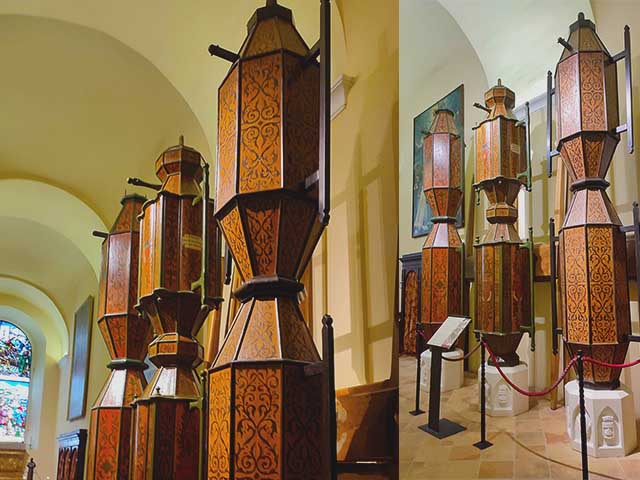
Ma cosa sono i Ceri?
What Exactly Are the Ceri?
I Ceri non sono vere candele, ma imponenti statue di legno alte circa 5 metri, abbinate a tre santi e colori: Sant’Ubaldo (giallo), San Giorgio (blu) e Sant’Antonio (nero).
The Ceri aren’t actual candles but towering wooden statues about 5 meters tall, associated with three saints and colors: Saint Ubaldo (yellow), Saint George (blue), and Saint Anthony (black).
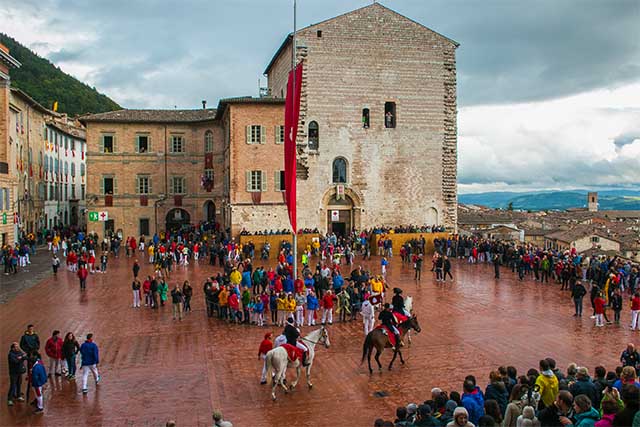
15 maggio: una giornata da ricordare
May 15th: A Day to Remember
La giornata inizia presto con l’Alzata, quando i Ceri vengono messi in posizione verticale nella Piazza Grande. Da ogni cero si lancia una brocca di ceramica che deve rompersi. (Attenti alla testa!)
The day begins early with the “Alzata,” when the Ceri are lifted upright in Piazza Grande. From each candle, a ceramic jug is tossed and must break. (Watch your head!)
Nel pomeriggio, i Ceri vengono trasportati in corsa fino alla Basilica di Sant’Ubaldo sul Monte Ingino. La gara non prevede vincitori: è una celebrazione di tradizione e devozione.
In the afternoon, the Ceri are raced to the Basilica of Saint Ubaldo on Mount Ingino. There are no winners in this race; it’s a celebration of tradition and devotion.
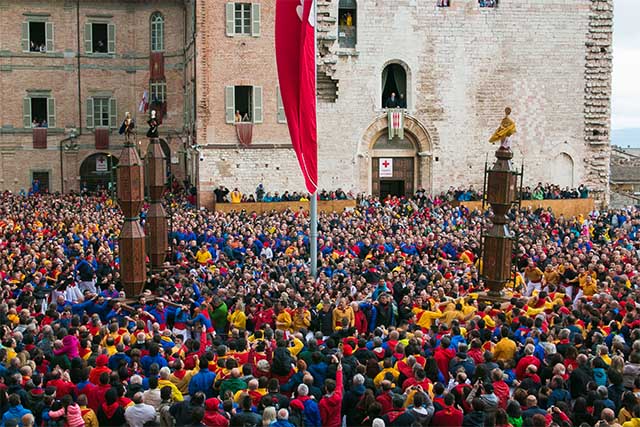
Non è per tutti!
It’s Not for Everyone!
Visitare Gubbio il 15 maggio richiede una buona dose di coraggio. Tra folla, movimento e tradizioni goliardiche, ci vuole un pizzico di pazzia per immergersi completamente! Ah, e gli abitanti di Gubbio? Si chiamano eugubini!
Visiting Gubbio on May 15th takes some bravery. Between the crowds, movement, and spirited traditions, you’ll need a touch of madness to dive in fully! Oh, and the people of Gubbio? They’re called eugubini!
